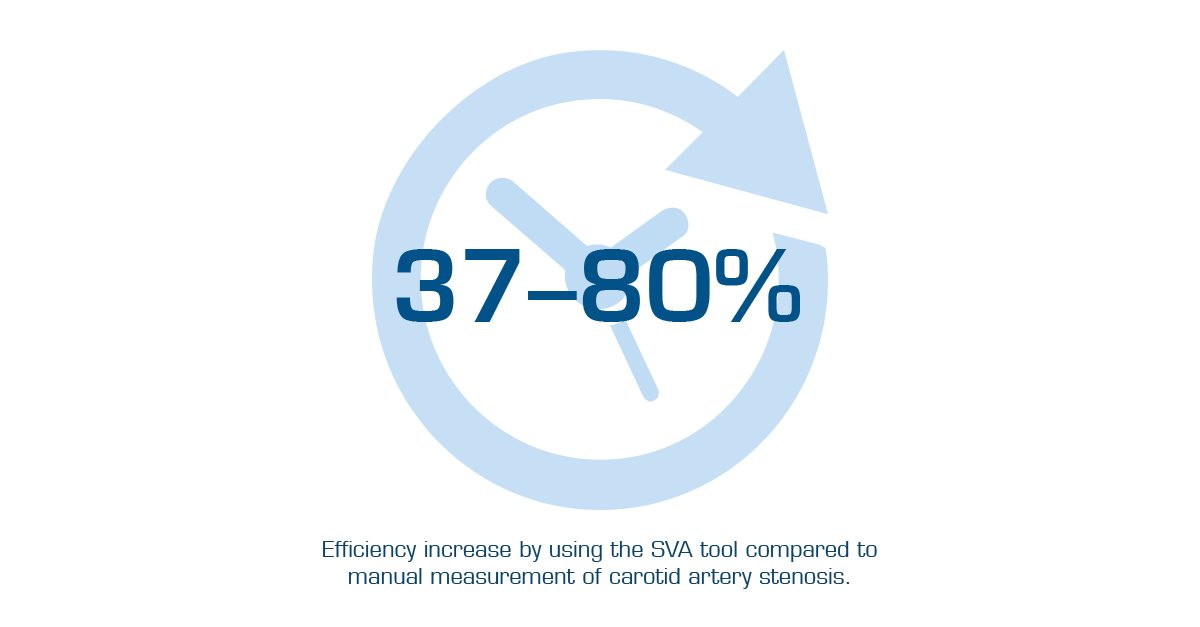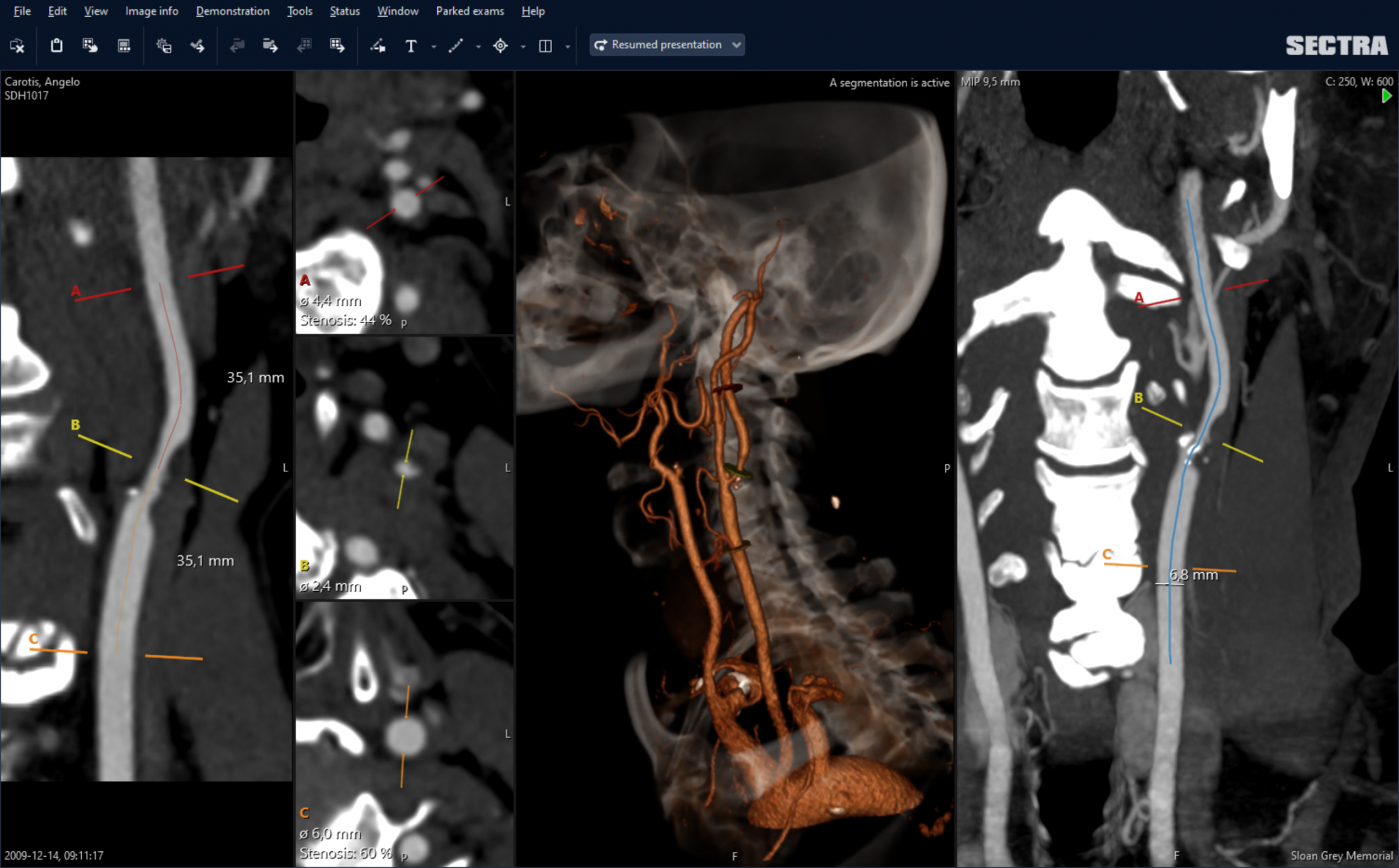The Sectra Vessel Analysis tool
SVA is accessible within the Sectra Enterprise Imaging Solution and provides radiologists with an efficient way to semi-automatically measure and calculate the degree of carotid artery stenosis, including measurements of the vessel diameter and length. The tool is accessed by right-clicking on the diagnostic image window, allowing users to select the vessel they wish to analyze. SVA calculates a centerline through the vessel and shows a library of images orthogonal to the centerline, including cross-sectional views.
If the radiologist does not agree with the calculated vessel diameter, it can easily be adjusted through direct interaction. This is done by moving one marker to the area with the largest stenosis, and the other marker to the area with normal lumen below and above the stenosis. The tool will calculate the degree of stenosis and the analysis can be saved as a bookmark and/or screenshot. SVA is designed to find the centerline even when the contrast is very low.
Background and study design
The calculation of the degree of carotid artery stenosis is an important component in the diagnosis of stroke, especially for patients with significant stenosis (>50%). In Region Skåne, approx. 15 stroke patients are treated daily at both Lund and Malmö Hospitals. Typically, several of these patients have significant stenosis, which requires a calculation of stenosis.
The measurement of stenosis in these critical patients is crucial to determine the best possible treatment option. Because of its increase in efficiency and enhanced accuracy, Region Skåne has decided that the standard of care will utilize SVA on all cases of carotid artery stenosis. To determine the true savings of SVA, Sectra performed a site analysis in 2019 to evaluate its impact on the radiology workflow.
Method
Three different patient cases with similar symptoms were selected for review, all of which had carotid artery stenosis. Their symptoms included dizziness, numbness in hands and confusion.
Three radiologists, with varying levels of experience using the SVA tool, participated in the review. They were asked to measure the degree of stenosis on all three patient cases— first manually and then using SVA. Each measurement and calculation was recorded, and the time difference was calculated. The radiologists were also asked their opinion of the SVA tool and the impact it had on their workflow.

Results
The analysis resulted in the conclusion that radiologists perform faster calculations using SVA compared to manual measurement.
The time savings varied from 20 seconds (corresponding to a 37% efficiency increase) to 132 seconds (corresponding to an 80% efficiency increase). The average time savings was 68 seconds, equivalent to a 53% increase in efficiency.
Discussion
The Sectra Vessel Analysis tool saves valuable time for radiologists, but the time savings vary depending upon the type of case and experience level of the radiologist—both in terms of number of years in practice and time using SVA.
Manual measurements often require radiologists to use a traditional calculator to estimate the degree of stenosis. For difficult cases where the vessel is curved, the manual method of measuring the diameter is not perceived as accurate. Additionally, the SVA tool minimizes the time-consuming task of scrolling through image stacks.
The main benefits of SVA include ease of use, speed, and increased accuracy in the measurement of diameter when the carotid artery is curved. Moreover, the presentation of the vessel, both axial and cross-sectional, was perceived to provide a clear overview and increased radiologist confidence in measurement accuracy and overall assessment.

